Key takeaways
- Legal advocacy serves as a bridge between law and the community, highlighting the importance of making legal systems accessible to those in need.
- Successful policy change relies on understanding the political landscape, building relationships, and recognizing the importance of patience and persistence.
- Identifying key policy targets and tailoring approaches to their priorities is crucial for effective advocacy and influence.
- Building and maintaining coalitions enriches advocacy efforts, as diverse perspectives can create greater momentum and drive meaningful change.
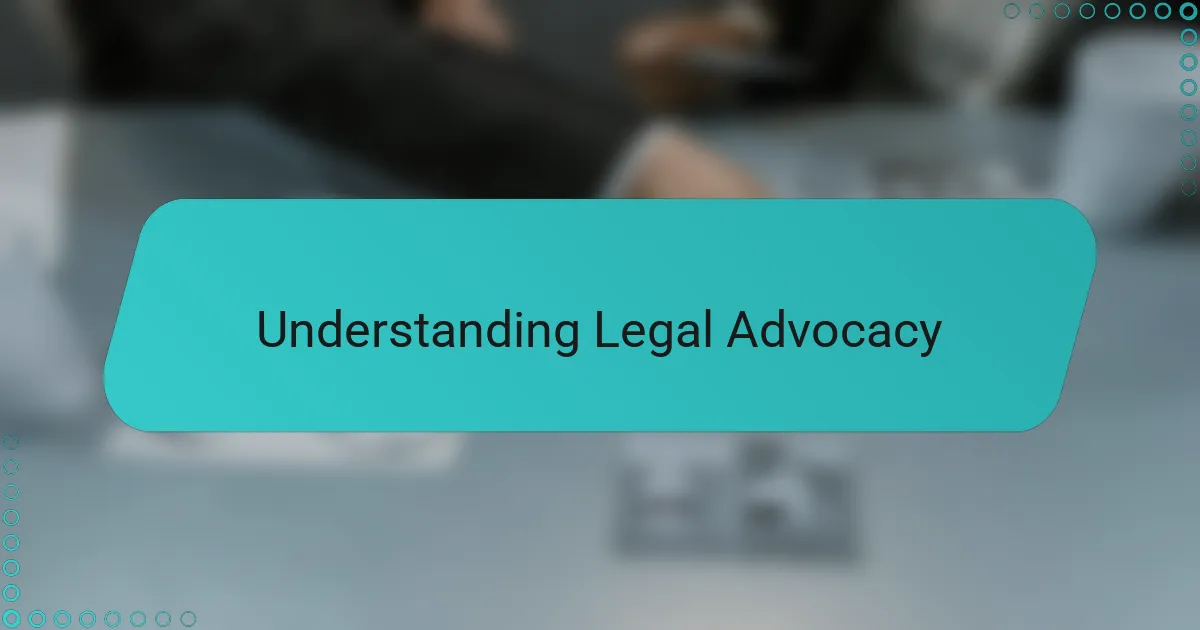
Understanding Legal Advocacy
Legal advocacy, to me, has always felt like the bridge between the law and the people it aims to protect. I often wonder—how many voices go unheard simply because they don’t have the right platform? That question keeps me grounded in this work.
When I first encountered legal advocacy, I was struck by its power not just to interpret laws but to shape them. It’s more than courtroom battles; it’s about influencing policy and creating lasting change. Have you ever considered how one well-placed argument can ripple through an entire community?
At its core, legal advocacy is deeply personal. I’ve seen firsthand how it can transform lives, offering hope where there was none. Isn’t that the essence of justice—making the complex world of law accessible and effective for those who need it most?
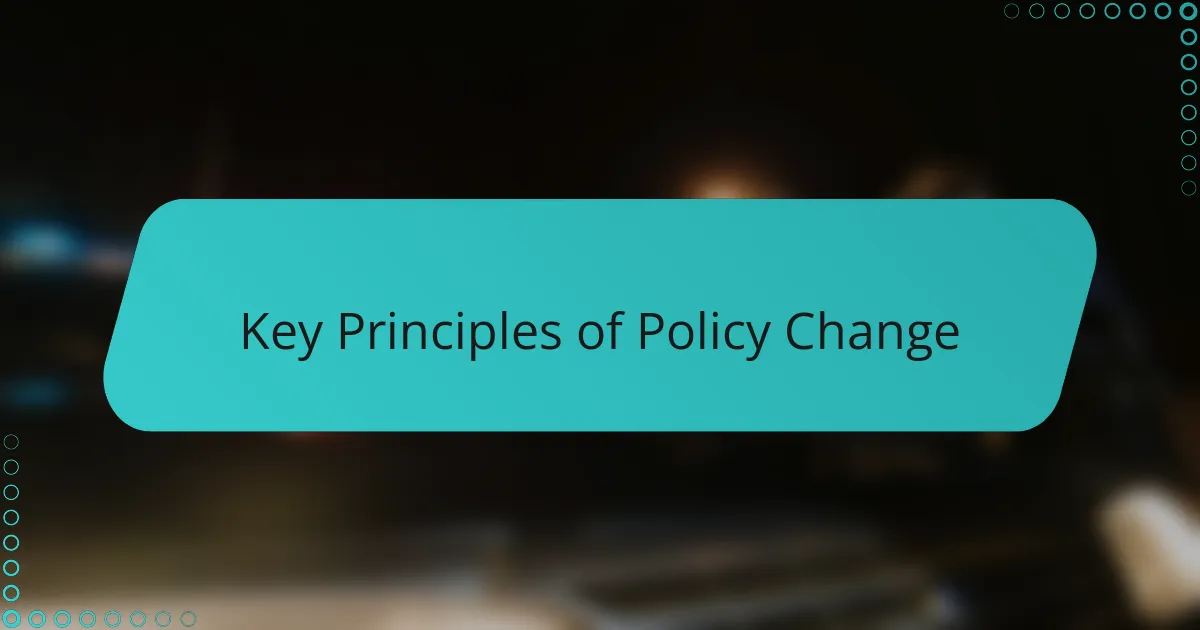
Key Principles of Policy Change
Policy change, from my experience, hinges on understanding the landscape thoroughly. You can’t change what you don’t fully grasp—who holds the power, what motivates decision-makers, and where the opposition lies. I’ve found that diving deep into these details often reveals unexpected allies or opportunities that make all the difference.
One principle I hold close is patience blended with persistence. Policy shifts rarely happen overnight. I remember working on a campaign that felt stuck for months, and I questioned if progress was even possible. Then, suddenly, a small breakthrough opened the door wide, proving that steady effort truly moves mountains.
Ultimately, successful change is rooted in relationships. Building trust with stakeholders means you’re not just pushing your agenda but collaborating for a shared vision. Have you noticed how a conversation over coffee can sometimes do more to influence policy than formal meetings? That personal connection is where real impact begins.
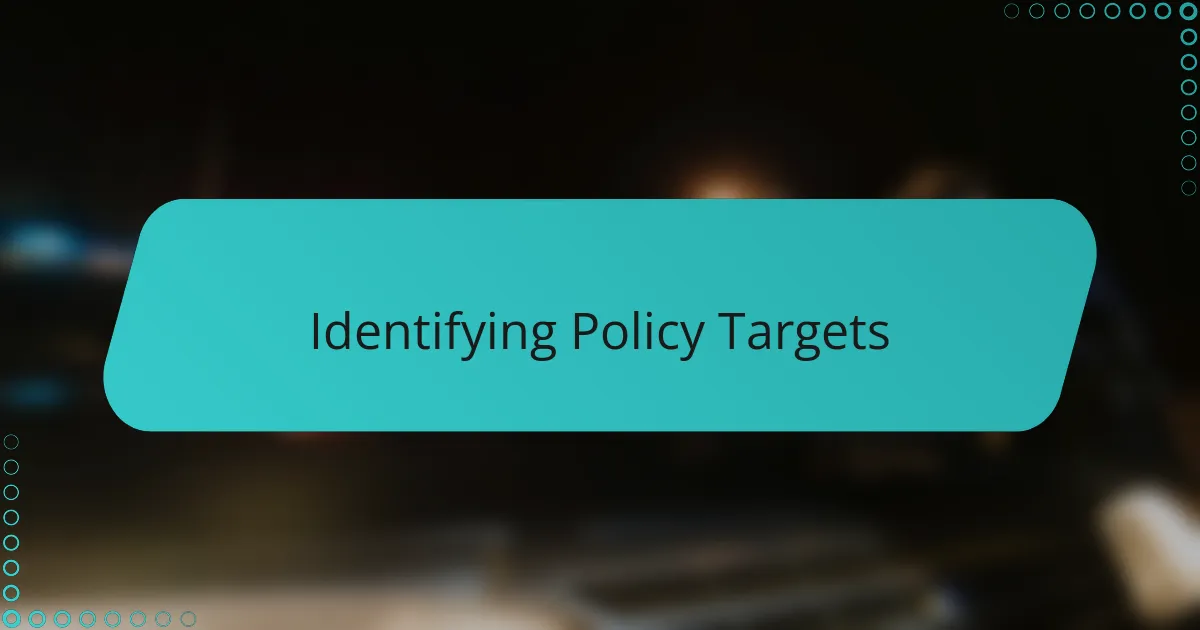
Identifying Policy Targets
Pinpointing the right policy targets is like aiming at the bullseye in advocacy—it shapes where all your effort lands. Early in my career, I learned that casting too wide a net wastes energy and dilutes your impact. So, I ask myself: who truly holds the levers of change, and where can my voice matter most?
Once, I was involved in a campaign where identifying a lesser-known committee chair became the game changer. That moment taught me that targets aren’t always obvious; sometimes, the real influence lies behind the scenes. Have you ever discovered a surprising decision-maker whose support shifted the whole momentum?
Focusing on policy targets also means understanding their priorities and pain points. When I tailor my approach to address what matters to them, doors open more readily. It’s less about confrontation and more about connection—and that’s where genuine influence begins to take root.
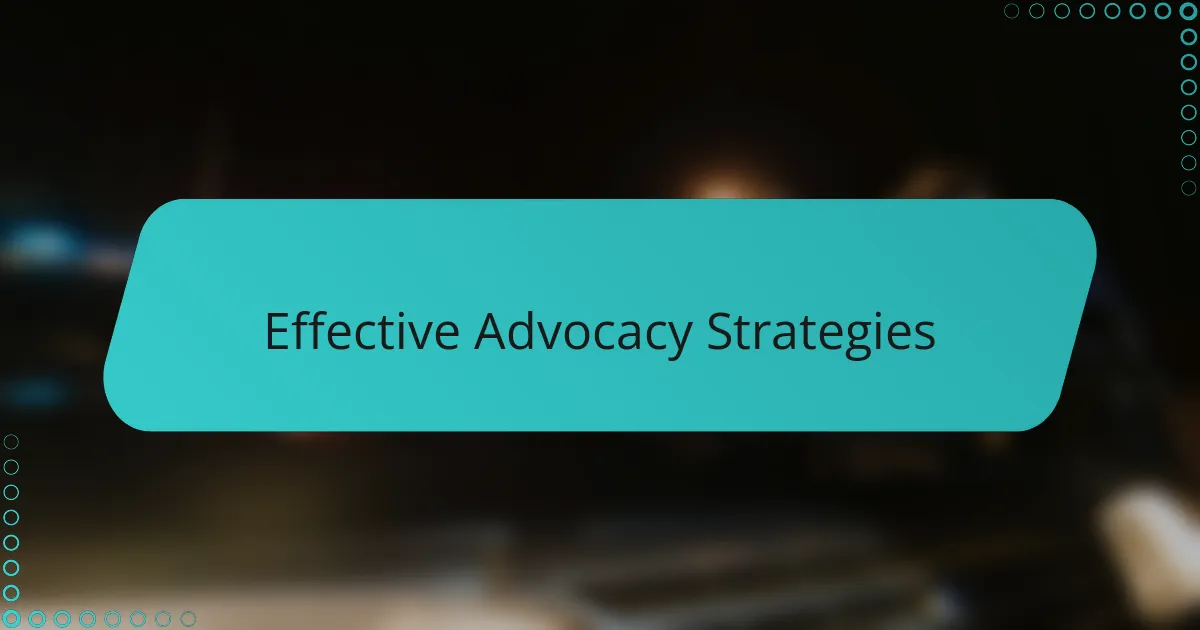
Effective Advocacy Strategies
Effective advocacy starts with crafting a message that resonates—not just with facts, but with the values and concerns of those you’re trying to reach. I remember once tailoring a legal argument to reflect the community’s fears and hopes instead of just citing statutes. That approach transformed a skeptical audience into engaged allies almost overnight. Isn’t it remarkable how empathy can be as persuasive as logic?
Another strategy I rely on is coalition-building. I’ve seen firsthand how joining forces with diverse groups amplifies voices that might otherwise be ignored. When we pooled resources and perspectives, our combined energy created momentum that no single organization could have achieved alone. Have you found that collaboration often unlocks possibilities that isolation simply can’t?
Finally, timing and persistence play a critical role. Sometimes you push, step back, and push again, waiting for the right moment to strike. There was a campaign I worked on that stalled for months, testing my patience. When the political climate finally shifted, our consistent presence gave us the credibility to influence key decisions. Isn’t it true that steadfastness, paired with strategy, is where real change takes root?
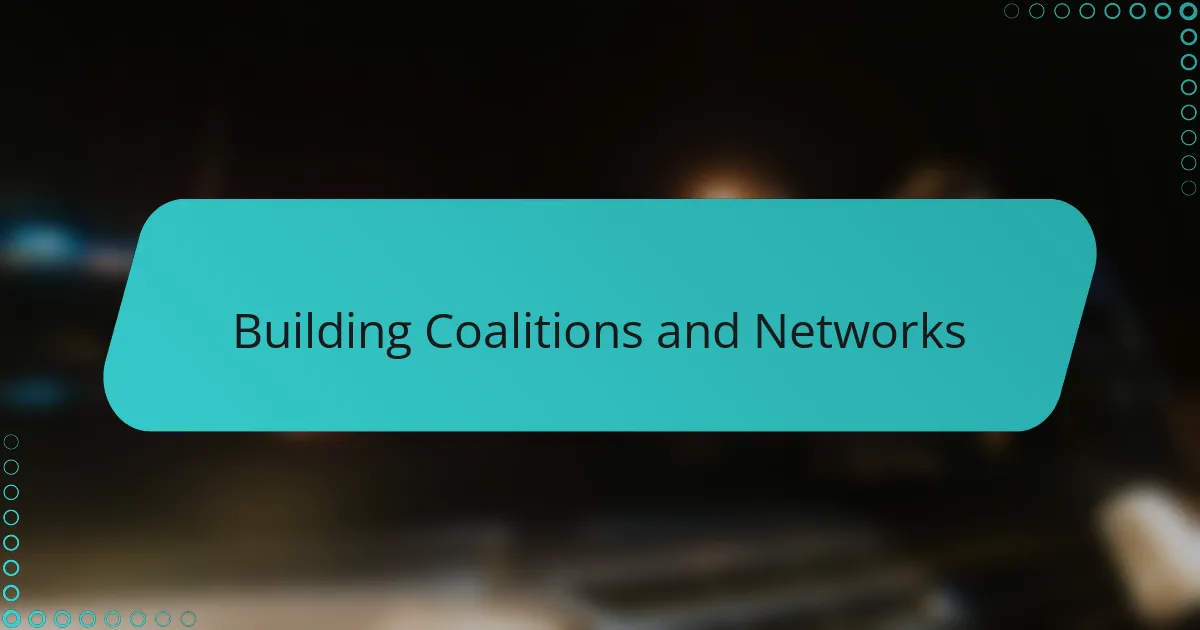
Building Coalitions and Networks
Building coalitions has shaped much of my advocacy work. I’ve noticed that when I connect with others who bring diverse expertise and experiences, our combined weight carries far more influence than going it alone. Have you ever felt the power shift when a group’s unified voice rises above individual ones?
Networking, in my experience, isn’t just about broadening contacts; it’s about nurturing genuine relationships. I recall a time when a casual conversation led to a strategic partnership that became the backbone of a successful policy campaign. Isn’t it fascinating how trust, built slowly, often opens doors to unexpected opportunities?
What strikes me most is how alliances must be maintained, not just formed. I’ve learned that consistent communication and shared goals keep coalitions strong, especially when facing setbacks. How often do we underestimate the time and care needed to sustain these vital connections?
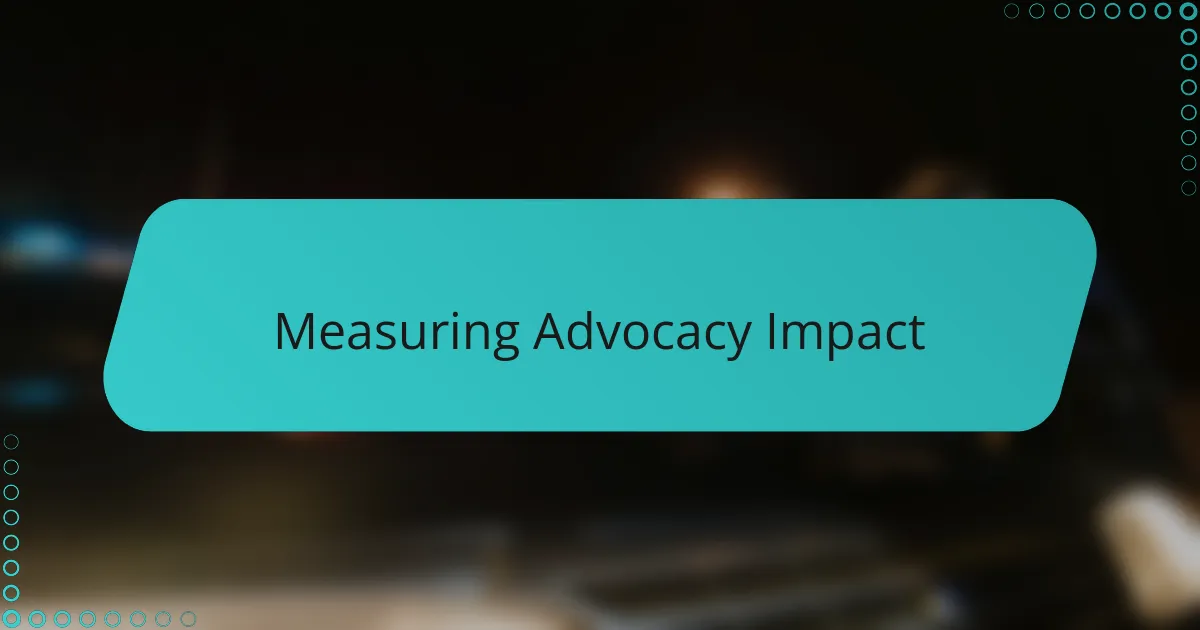
Measuring Advocacy Impact
Measuring advocacy impact can feel like trying to capture the wind—it’s intangible yet powerful. I’ve often grappled with quantifying success beyond headlines or policy wins. Is it the number of laws changed, the shift in public opinion, or maybe the relationships built behind the scenes that truly count?
One lesson I’ve learned is that impact isn’t always immediate or linear. I recall a campaign where the visible results appeared modest, but months later, a subtle policy adjustment affirmed that our groundwork had taken root. Doesn’t that make you wonder how many quiet victories go unnoticed in advocacy?
Tracking both qualitative and quantitative indicators has become my compass. Surveys, stakeholder feedback, media coverage, and shifts in decision-makers’ attitudes all tell different parts of the story. When I bring these pieces together, it paints a clearer picture of whether the effort is really moving the needle. Have you tried combining data with personal stories to assess your work’s true impact?
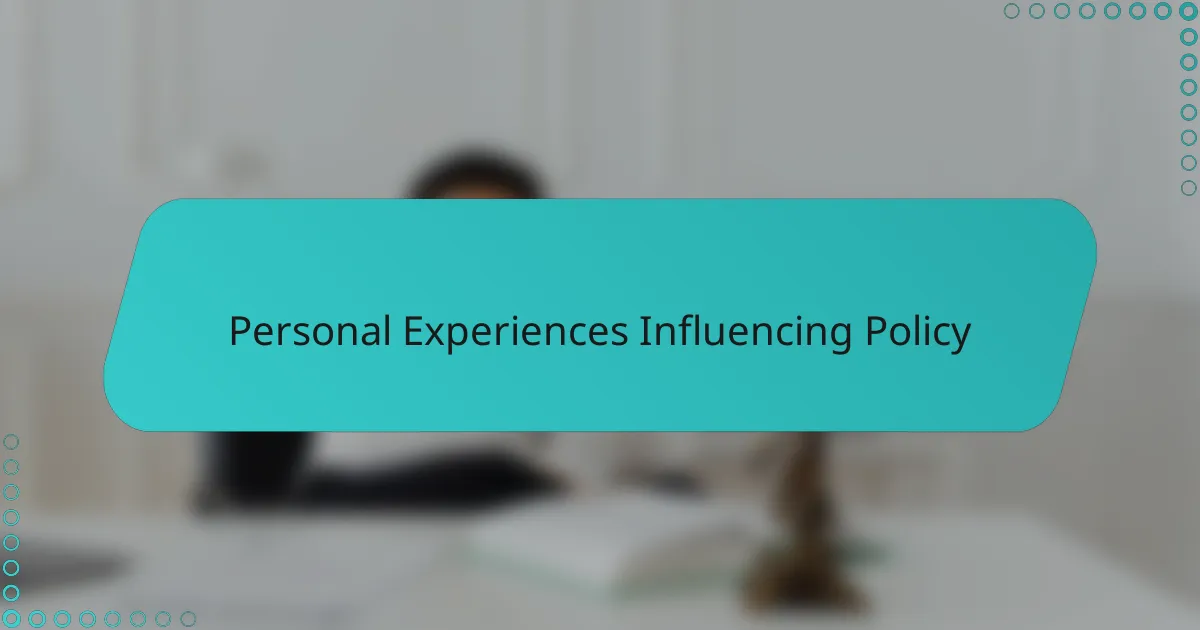
Personal Experiences Influencing Policy
One of the most profound ways my personal experiences have influenced policy work is through the stories I carry with me. I remember meeting a family struggling with housing insecurity; their challenges weren’t just statistics but vivid realities that kept me up at night. How could I ignore their voices when pushing for reforms? Those encounters transformed abstract policy debates into urgent calls for action.
At times, I’ve found that sharing my own journey—complete with its doubts and setbacks—builds unexpected bridges. When I opened up about navigating complex legal systems myself, it shifted stakeholders’ perceptions, making policy discussions less about cold rules and more about lived experience. Have you noticed how vulnerability can sometimes be the strongest advocacy tool?
These personal connections don’t just fuel my passion; they shape the strategies I choose and the arguments I make. They remind me that behind every policy are real people, each with a unique story deserving to be heard. Isn’t that the true power of advocacy—to turn individual experiences into collective change?


